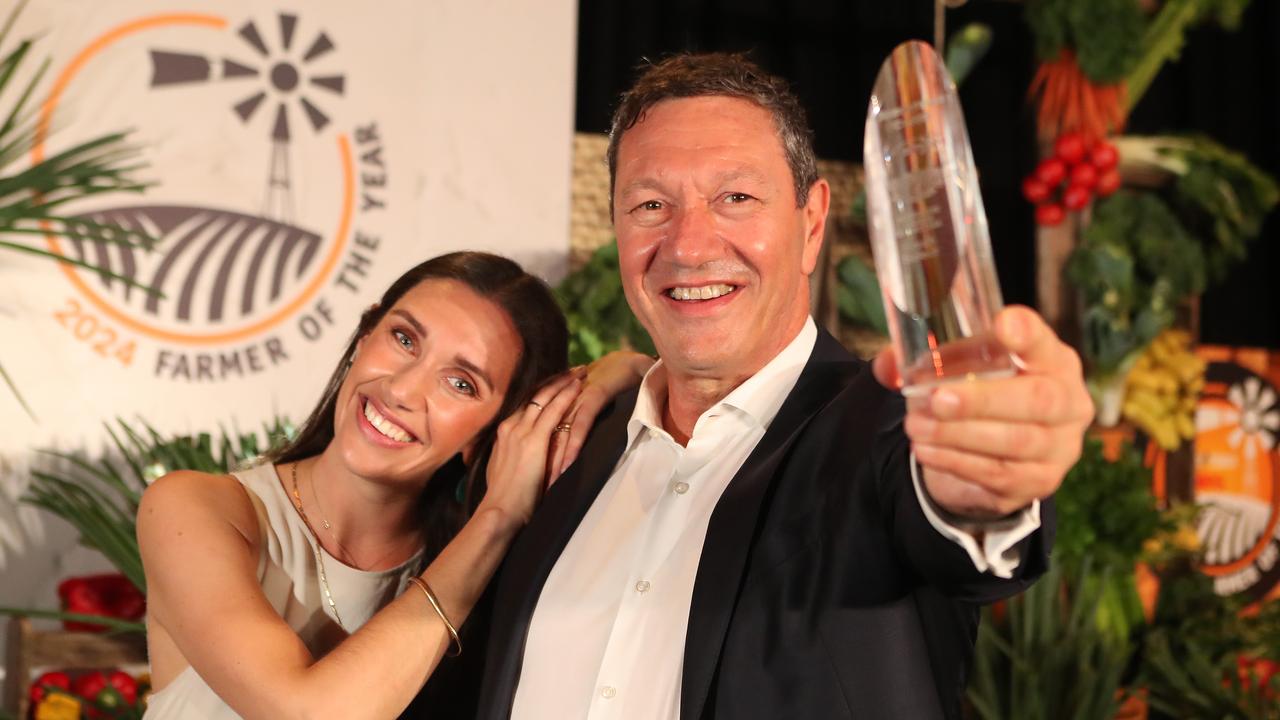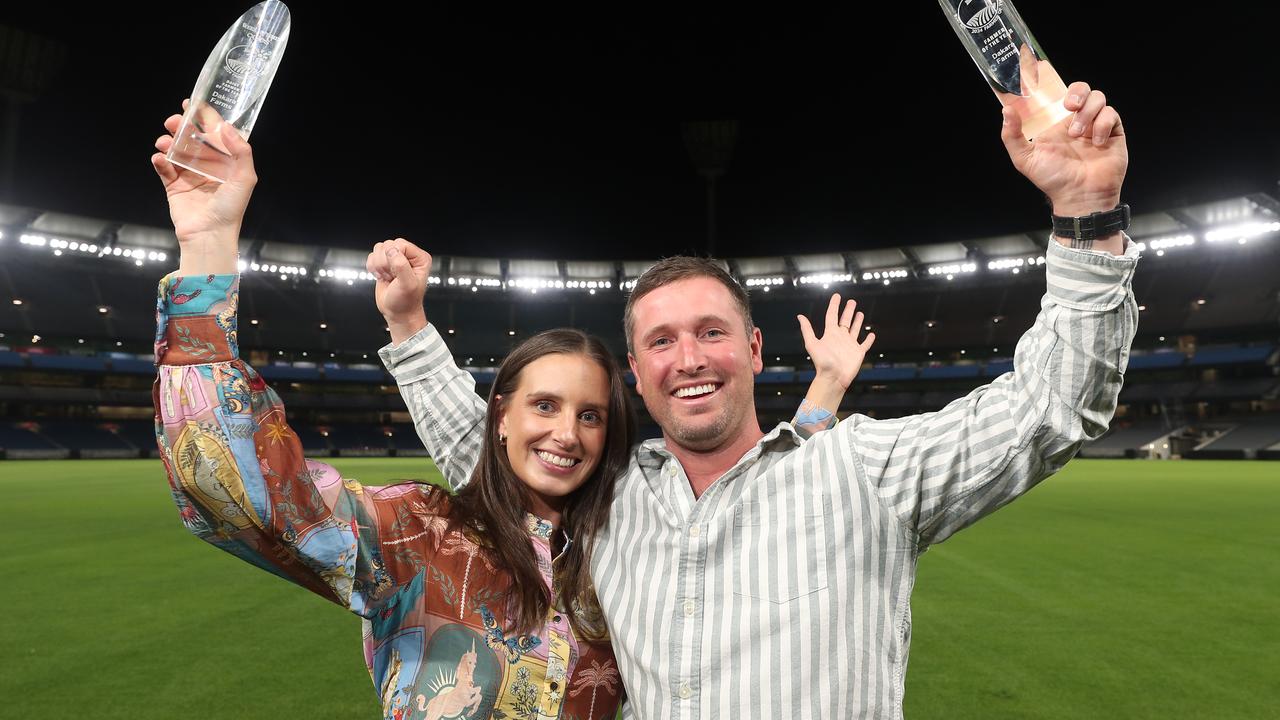Raphael family’s dairy farming success at Muswellbrook, NSW
A bold move to cut back urea use on pastures had a surprising payoff for this NSW dairy farming family, writes Fiona Myers.
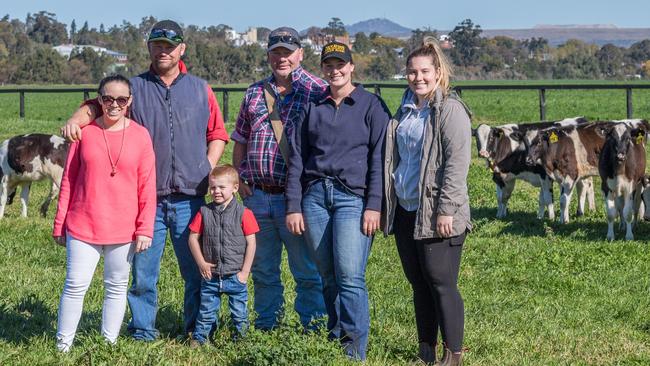
WHEN you have a goal of producing 10 million litres of milk off grass, growing as much feed as possible is essential.
It therefore took an enormous paradigm shift for the Raphaels to cut back their urea use to a third of their normal application rate.
But for the farming family, who run 1000 Holstein cows at Muswellbrook in the NSW Hunter region, the decision has paid off.
While there were some short-term losses in feed production, their country is now just as productive and their herd is healthier and more fertile.
John and Catherine Raphael and John’s brother Doug and wife Amy run Glen Eden Holsteins at Muswellbrook on 270ha of their own country and approximately 150ha of land leased from a neighbouring coal mine.
John said they started to notice issues with their herd particularly around fertility but also longevity.
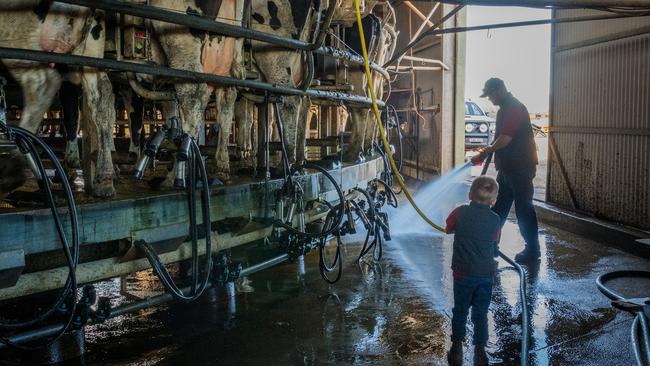
RAPHAEL FAMILY, MUSWELLBROOK, NSW
MILK 1000 Holstein cows on 420ha of owned and leased land
CUT back a third of their urea application
HAS not hurt grass production and improved fertility rates
AIM to produce 10 million litres of milk from grass
The operation is based around grass feeding the cows, supplemented by grain which is fed in the dairy. The herd grazes on irrigated pastures watered by pivots with rotation lengths ranging from 12 days in spring up to 23 days in winter.
“We were putting on large amounts of urea — applying 150kg a hectare after each rotation,” John said. “We engaged a soil biologist to look at the health of our soils and found we there was no biology left in our soils — the decision to move back from using the high rates of urea was not hard in the end.”
They stopped using as much urea, dropping back to a third of what they originally applied, and now grow the same amount of grass from the area.
But the flow on benefits have extended even further in terms of their cows.
“When we were using the higher rates of urea, we used to get 62 per cent of our cows in calf,” John said. “We improved the conception rate by 7 per cent in just 18 months. We are now getting nearly 90 per cent – we had a hunch the lower fertility was due to the high levels of nitrogen we used and it proved it was.”
WORM TURNS
THE responses were also measured through improvements in soil health – worm counts in the profile went from virtually nothing to up to 25 tonnes/hectare and organic carbon levels lifted.
And even with the dry seasons, the Raphaels have still continued to soil test their farm twice a year to keep an eye on the effects of their changed management system.
The irony of their focus on soil health is not lost on John, who has watched as coal mines encroach on the dairy industry in the district.
“We have some of the best soil types in Australia here and it’s what makes it possible to run a dairy operation efficiently,” he said. “The alluvial soils area is as good as you would get anywhere and allow us to grow good quality pasture.”
The herd grazes grass for 10 months of the year, with 11 centre-pivot irrigators used to grow a mix of perennial and annual ryegrass and clover.
The pivots are also used to grow maize crops, which are made into silage and fed to cows as part of a Total Mixed Ration.
The Raphaels have some equipment but generally rely on contractors to make their silage, a practise which can sometimes be fraught with problems with delays.
Yet John has found a means of ensuring that his contractors are committed to prioritising his operation.
“We spread out the payments for our contractors so they receive an amount every month, rather than a lump sum when the job is done,” he said.
“It works for us in terms of cash flow and it works for them too.”
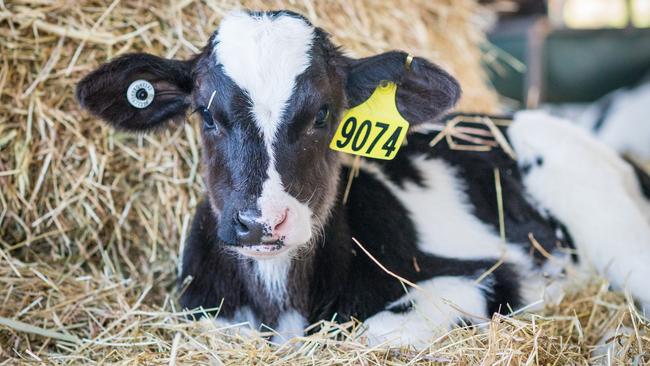
PASTURE MASTERS
THE feeding program sees the cows on the pastures from March until December, and fed a total mixed ration in January and February when the pastures are dry.
“We like to make about 5000 tonnes of corn silage a year and try to finish with 3500-4000 tonnes still at the end of the winter,” John said. “It’s like an insurance policy against low water allocations.”
The herd calves year-round, with the peak of calving in spring when the feed levels are the greatest. Milk production flows from that with a goal of one million litres of production monthly from August until October. In other months, production dips to about 450,000 litres but overall production sits at 8.9 million to 9.4 million litres of milk a year.
“We would like to get to 10 million litres and that would involve running a few more cows and for the seasons to be right,” John said. “We have two things we concentrate on to get to this goal — to grow grass and to get the cows in calf.”
They are also concentrating on the quality of the milk they produce, which is either sent to Sydney or sometimes to Brisbane, a nine-hour drive away.
“In spring, the fat content of our milk is lower that at other times of the year and we are trying to put things in place to correct that,” John said.
“It’s about genetics, of course, but it is also about feed. The cows get 2.5 tonnes a head fed in the dairy each year and so we are looking at using a mix of grains rather than just one to see how it affects the milk composition.”
MILK MADE
WHILE the Raphaels have tweaked everything they can to boost efficiency, the milk price means the margins are tight.
John maintains there should be a premium for grass-fed milk, similar to the premiums paid in the beef industry for cattle grown on pasture.
“I think the public imagine that when they buy milk, the cows are grazing on a lovely paddock and they are with our operation,” he said.
“There should be a premium for those of us who are producing this way.”
With low returns in terms of a cents a litre, John said plenty of other dairy farmers were turning away from the industry.
“There was a dairy factory in Muswellbrook when my parents first moved to the property, and there would have been a couple of hundred farmers supplying it,” he said.
“If the milk price could get back to 65-70c/litre paid to farmers, there would be plenty of farmers who would get back into dairying.”

